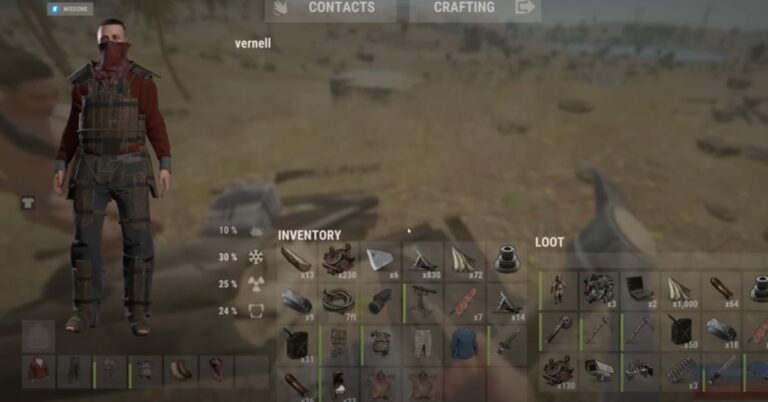In Rust, anticipating enemy movements can greatly improve your gaming experience. By taking advantage of ESP technology, you can analyze past behaviours and apply AI algorithms that update in real-time. This means that you can predict where opponents are likely to go, allowing for more strategic decisions during encounters.
But, what happens when you combine this predictive capability with an in-depth analysis of player behavior patterns? The implications could change the way you approach both combat and survival in the game. Read on to learn more about the potential strategies you could use when utilising Rust ESP Cheats for PC.
Overview of Rust
When you immerse yourself in Rust, you’re entering a brutal multiplayer survival game crafted by Facepunch Studios. The game mechanics are designed to challenge your instincts and adaptability in a vast open-world environment filled with diverse biomes, from dense forests to arid deserts. Each biome presents unique resource availability and environmental threats, forcing you to strategize your resource management effectively.
In Rust, you’ll quickly learn the importance of a strong crafting system. Gathering resources – wood, stone and metal – becomes essential as you create weapons, tools and building materials to protect yourself and thrive. The crafting system empowers you to innovate, allowing for improvisation under pressure as you face both hostile players and unpredictable wildlife.
Player interactions shape your experience in Rust; alliances can be fleeting and betrayal lurks around every corner. PvP combat is a significant focus, where mastering stealth and ambush tactics can mean life or death. You’ll find yourself constantly checking your surroundings, gauging the intentions of others and preparing for confrontations.
As you navigate this dynamic game, you’ll encounter various NPCs and animals, each adding layers of complexity to your survival strategy. Every decision you make – what to craft, when to gather resources, how to engage with others – reflects the complex web of game mechanics that define Rust.
Embrace the chaos and adapt your strategies to survive in this unforgiving world.
Understanding ESP Technology in Rust
Often, players using ESP technology in Rust find themselves with a tactical edge that transforms their gaming experience. This advanced tool not only overlays enemy positions but also predicts their movements, improving your situational awareness.
Here are four important things to consider:
1. ESP Advantages: With real-time tracking and predictive modeling, you can anticipate enemy actions, allowing for strategic positioning and preemptive aiming.
2. ESP Limitations: The effectiveness of ESP tools can fluctuate based on the game’s AI complexity and the sophistication of the software, making reliability an important factor.
3. ESP Ethical Concerns: As you gain an advantage, it’s important to recognize the integrity issues within the gaming community. Using ESP can undermine fair play, leading to backlash from other players.
4. ESP Implementation Strategies: To maximize your success, think about combining ESP with traditional skills. Use predictive insights to inform your decisions while maintaining a genuine engagement with the game.
Community reactions vary, with some players embracing the tactical benefits, while others condemn the ethical implications of using such technology.
In the end, while ESP can greatly improve your experience in the game, it’s important to weigh the advantages against the potential fallout in community trust and fairness. Balancing these aspects will help you to navigate the complexities that come with using ESP in Rust.
The Role of AI Algorithms in Predicting Movements
AI algorithms play an essential role in how ESP predicts movements in Rust, transforming the way players engage with the game. By using advanced machine learning techniques, these algorithms analyze past enemy positions, speed and direction to forecast future movements. These predictive analytics empower players to optimize their strategies, allowing them to position themselves advantageously before an enemy even appears on their radar.
The integration of AI enhancements into ESP systems means that they can continuously learn from gameplay data, fine-tuning their movement algorithms for improved accuracy. As these systems gather more data, they become adept at recognizing patterns in player behaviour, effectively improving situational awareness. This adaptive learning is vital for differentiating between various objects in the game, thereby ensuring that only actual threats are highlighted while minimizing false positives.
Additionally, the real-time updates provided by AI-driven ESP systems allow players to anticipate enemy actions and make critical decisions that can put them at an advantage in the match. With effective threat differentiation, players can focus on actual dangers, improving their overall strategic approach.
As these AI algorithms evolve, they not only improve the accuracy of predictions but also contribute to game optimization by enabling more informed and tactical responses to dynamic game scenarios. Ultimately, the role of AI algorithms in ESP systems signifies a leap forward in gaming technology, providing players with unprecedented insights into enemy movements and shaping the future of competitive gaming in Rust.
Analyzing Player Behavior Patterns
Understanding player behavior patterns is crucial to improving the predictive capabilities of ESP systems in Rust. By analyzing these patterns, you can take advantage of insights into player psychology and improve movement predictions, which can drastically impact your experience of the game.
Here are four important things to consider when analyzing player behavior:
1. Movement Strategies: Players often develop specific routes and patterns based on the game environment. Identifying these can help to predict where they might go next.
2. Tactical Decisions: Understanding how players make decisions in high-pressure situations allows ESP systems to anticipate sudden changes in movement by adapting to their strategies.
3. Environmental Influences: Factors like terrain and available cover greatly affect how players navigate the game. By incorporating these factors into predictive models, you can increase your accuracy.
4. Game Dynamics: Players adapt their behavior based on changing dynamics within the game, such as the presence of enemies or resource availability. AI algorithms can analyze these shifts in real time, improving prediction capabilities.
Analyzing player behavior patterns can reveal valuable insights that improve your strategic approach in Rust. By engaging in behavioral analysis, you can track movement trajectories over time, identifying player tendencies that may predict future actions. Each player typically follows consistent routes across the map, which allows you to use movement prediction to anticipate their next position based on historical data.
In combat scenarios, understanding typical engagement strategies is essential. Most players exhibit predictable behaviors, such as retreating to cover when under fire or attempting to flank their opponents. By recognizing these patterns, you can better anticipate enemy intentions and movements, positioning yourself advantageously for potential encounters.
Additionally, the frequency and timing of player actions, like resource gathering or base raids, provide additional context for trajectory mapping. This information allows you to forecast when and where opponents are likely to appear, enabling you to set traps or prepare defenses.
Machine learning algorithms play a significant role in refining your analysis. By processing vast amounts of gameplay data, these algorithms can recognize complex behavior patterns that may not be immediately obvious. The more data you gather, the more accurate your predictions will become.
In the end, using the insights gained from analyzing player behavior patterns can dramatically improve your experience in Rust, transforming how you approach each encounter and improving your overall strategic effectiveness. By understanding the nuances of player movements, you’ll gain the upper hand in this competitive environment.
How ESP Can be Used to Find Weapons and Loot in Rust?
ESP can be a game-changer when you’re hunting for weapons and loot in Rust, seamlessly revealing valuable items hidden behind walls or terrain. By using ESP, you can greatly improve your gaming experience.
Here’s how it can help:
1. Targeted Visibility: Customize your ESP settings to show only specific types of loot, like weapons or medical supplies, making your scavenging efforts more efficient.
2. Distance Indicators: ESP provides important distance markers, allowing you to gauge how close you are to loot without risking exposure to enemy fire.
3. Loot Prioritization: With ESP, you can prioritize which items to collect first based on their visibility and proximity, streamlining your resource management.
4. Strategic Scavenging: By tracking loot and enemy positions, you can plan your movements carefully, avoiding ambushes while heading for valuable resources.
Using an ESP tool not only improves your awareness of enemies but also boosts your overall performance in the game.
You’ll be able to make informed decisions about when to engage or retreat, ensuring that you maximize your loot collection while minimizing risks.
The ability to see what lies ahead allows you to strategize effectively, giving you an advantage as you navigate the treacherous Rust landscape.
Frequently Asked Questions
1. What is ESP technology in Rust?
ESP (Extra Sensory Perception) in Rust is a tool that provides players with real-time information about their surroundings, including the locations of enemies, loot and other key elements, by overlaying this data on their screen.
2. How does ESP help in predicting enemy movements in Rust?
ESP uses AI algorithms to analyze past player behavior and movement patterns, allowing it to predict where opponents are likely to go, helping players make strategic decisions in real time.
3. Is using ESP in Rust considered cheating?
Yes, using ESP is generally considered cheating because it provides an unfair advantage over other players by revealing hidden information, leading to potential bans and negative reactions from the community.
4. Can ESP be used to find weapons and loot in Rust?
Yes, ESP can highlight the locations of weapons and loot, making it easier to find valuable items quickly and efficiently, while also helping players avoid dangerous areas.
5. What are the ethical concerns associated with using ESP in Rust?
The main ethical concern is that ESP undermines fair play, giving users an unfair advantage, which can lead to a loss of trust within the gaming community and possible penalties from game administrators.

A computer engineer by day, gamer by night. He grew up playing Mario and contra, and just like every other 90s kid, he got passionate about mobile gaming. He had done bachelors in computer science and played fps and MOBA games for years.
